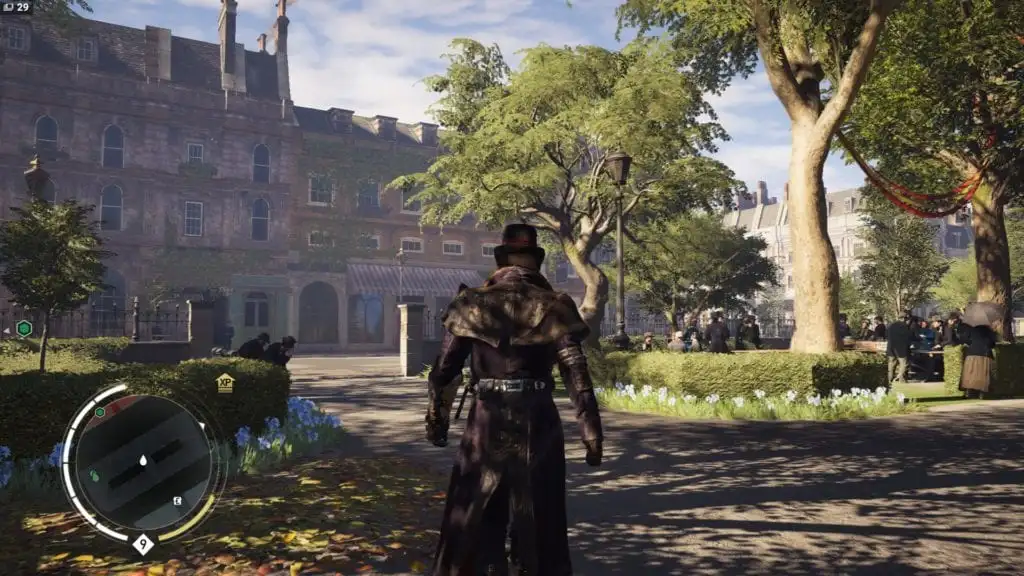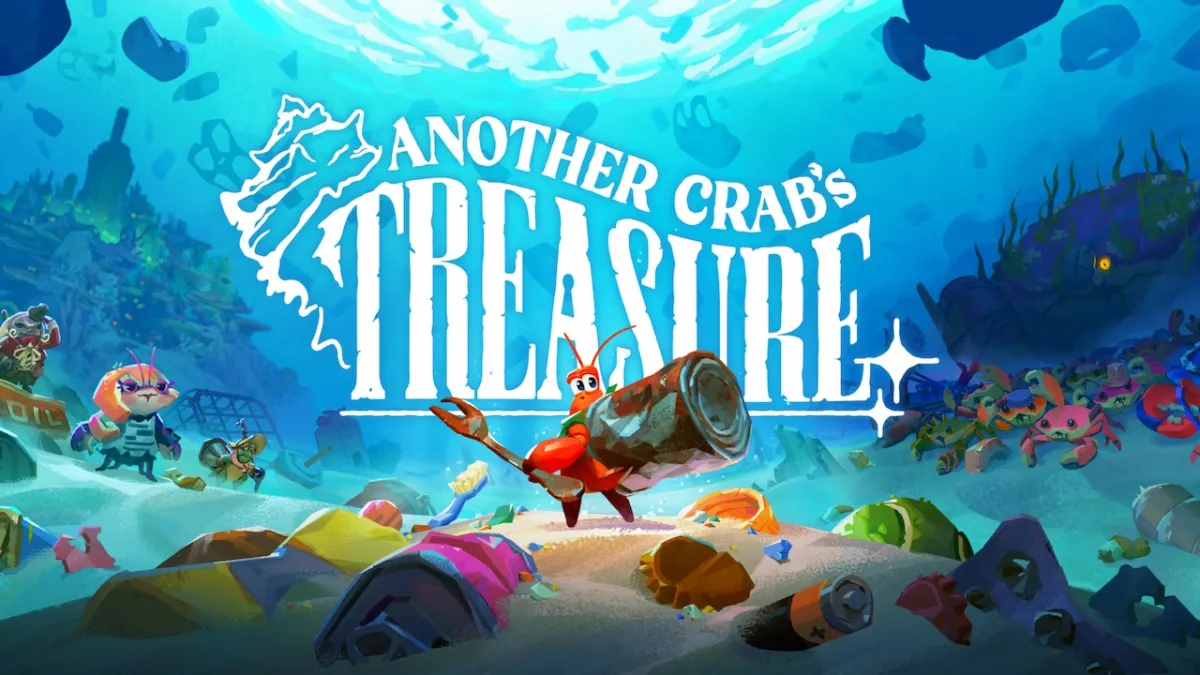Back when I reviewed Assassin’s Creed: Rogue, I tried to figure out how many games there were in the Creed series. It proved to be quite difficult. If you include absolutely everything, the number is up there in the 20s, but once whittled down to the ‘core’ set (the big budget, PC/major console ones, basically) Assassin’s Creed: Syndicate is something like the eighth or ninth entry.
Series progression has been strictly iterative in nature (particularly of late, when Ubisoft has multiple studios working on overlapping Assassin’s Creed projects), but there are two releases in the timeline that felt to me like significant, innovative jumps: Assassin’s Creed II and Assassin’s Creed: Black Flag.
AC II radically fleshed out the skeletal mechanics established by the first game. It did what good videogame sequels do; retained the foundations of the original, but expanded the concepts (traversal, stealth, combat and so on) in new, interesting ways that gave players greater interactivity with the open city. Black Flag, meanwhile, just looked at the sailing portion of Assassin’s Creed III and thought “fuck it, let’s mostly do a pirate game instead”.
Assassin’s Creed: Syndicate will not go down as a third innovative turning point in the series. It has some sensible, iterative ideas (as some of the stronger games in the series do), a fantastic setting, and decent characters. But it’s also a very safe, very familiar Creed.
I’m not entirely sure how heavily Unity leaned on the external ‘modern day’ stuff, because it was too poorly optimised at launch for me to be able to get far into it. Syndicate, though, has pretty much dispensed with it entirely. All the modern stuff happens in three or four cut-scenes, and the set-up for the entire game is effectively this: there was a Piece of Eden in Victorian London and the current-era Assassins want to know where it is, so please find it for them.
That’s honestly fine by me, as it relegates that side of things (which I think peaked with Black Flag’s cry-for-help satire on games development) to a framing device for historical parkour jaunts. To that end, Syndicate puts you in the implausibly over-stylised threads of Jacob and Evie Frye, Assassin siblings and aspiring power players in 1860s London.
He’s an impetuous, charming jerk (there’s never a shortage of those in the Assassins) who has an almost childlike glee in forming a ruthless gang of ‘Rooks’ to take back the streets from ruling criminal element ‘The Blighters’. She’s a missions-by-the-book agent with a powerful curiosity for Assassin history and Pieces of Eden. Together, they’re actually quite an enjoyable pair, whose skill-sets both complement one another and cause antagonistic tiffs in equal measure.
It may just be some weird romanticism for the days when Britain was a nation of manufacturing, and the architectural forms of that age, but Victorian London felt to me like a tremendous setting. The massive economic disparity between districts provides opportunities for thematically (though not so much mechanically) varied campaign missions and side-quests, which alight on everything from child labour to parliamentary politics. Industrial areas are packed with tight, terraced housing, coal yards and factories with tall smoke-stacks. In the richer portions of town, your Strands and your Westminsters, you find fancier houses, banks, solicitors, and the iconic landmarks like Big Ben, Buckingham Palace and Westminster Abbey.
The most novel of these areas is probably the Thames, which gets its own special activities centered around the continual movement of shipping traffic (legitimate and otherwise) up and down the river. Assassin’s Creed has always had a few issues with parkour on moving objects, but leaping from ship to ship works surprisingly well.
Traversal in general has been expanded by including a Definitely-Not-A-Bat-Grapple in the Assassins inventory. With this, Jacob and Evie (they effectively share a pooled equipment set) can hook on to ledges, rooftops and other sticky-out bits of architecture. The grapple is not entirely freeform as there are clearly designated points where it’s ‘allowed’ to go. This can result in some imprecision in aiming, and I found myself hooking on to the wrong building every now and then. Not a massive problem when fooling around in the city, but awkward when it leaves you flailing around during sensitive stealth sections.
Since you can now ascend most buildings with one grapple shot, Assassin’s Creed: Syndicate has effectively waved goodbye to any sort of puzzle-platforming. That hasn’t really been an aspect of climbing the way-point towers for quite some time, but it also means there are no side areas where you can go spelunking in underground tombs or whatnot.
Instead, Syndicate puts a bit more effort into the main assassination missions which (after the prologue bits) occur at the end of every Sequence. These now have a touch of ‘Hitman-lite’ about them, with a few specific environmental options or handy NPCs available for unique infiltration or stabbing opportunities. It could be waitress whose drinks you can sneakily poison, or a corpse in a morgue you could switch places with. You won’t miss these, because even with as much of the HUD toned down as possible, Assassin’s Creed: Syndicate will still put honking great icons on them.
It’s not a sweeping piece of innovation, but it does help to make the important assassination missions feel a bit more distinct and provides a few more options for your approach.
Syndicate’s other area of mechanical innovation also feeds into the assassination options. You can now ‘kidnap’ a guard, which reduces the range at which others can detect you to a localised circle that changes shape based on how rapidly you’re walking. If you keep your pace lethargic (and have the attendant ‘stop kidnap victims from squirming’ skill from the upgrade tree), it’s possible to stroll within chatting distance of most foes. Several missions demand that you use this (too many, actually, the designers seem a bit too in love with this new technique), but it’s always available as an option for certain types of infiltration.

Some of the kidnap targets loop the same irritating line, but others give you amusing back-and-forths like “being an orphan is exciting!”
Rather than walling off later areas of London, Assassin’s Creed: Syndicate semi-gates this stuff by populating the associated missions with higher level gang members. As well as earning money and experience through the main story missions, Jacob and Evie (who pretty much get equal screen time) can level up through re-taking districts of London from The Blighters. Each block of the city has an attendant sub-mission (a gang hideout, a factory to liberate, and so on), and a final ‘Gang War’ encounter to liberate the whole area.
The most prevalent, one might say ‘overused’, of these mission types is the Bounty Hunt, which involves using the kidnap function to stuff people into a carriage for the attention of your police chum, Frederick Abberline.
Many of the changes introduced by Unity are present here too, like quicker descents from buildings and the on-command crouch (meaning stealth is cover-based, rather than bush-based). That, sadly, includes the ‘paid cheats’ style microtransactions for quick experience and material boosts, which remain an irritating trap for people who don’t realise that the series (for now) gives you loads of each anyway. There aren’t any chests you have to open with an external app though, thank god.
Your gadgetry consists of a selection of Assassin’s Creed favourites (smoke bombs, crazy-person darts, throwing knives), and adds an electric stun-bomb to the collection. These only temporarily incapacitate guards, however. True ‘non-lethal’ options are surprisingly limited in Syndicate; you pretty much have to creep behind someone and do a slow ‘knock out’ restraint (or just avoid everyone entirely) if you want to keep people alive.
Direct combat now lies somewhere between the old style ‘please approach me one at a time’ Assassin’s Creed brawls and the familiar motions of Batman: Arkham titles. It has the stun and counter functions of the latter, but lacks the fluidity and still feels more stilted than its rhythmic cousins. This may also be the first time I’ve felt a little bit sorry for the goons of Assassin’s Creed, given the sheer viciousness of some of Jacob and Evie’s finishing moves.

The police are a weird faction in this game, you help them, bribe them, and murder them in roughly equal proportions.
Tonally, Assassin’s Creed: Syndicate is the most carefree and light-hearted one yet. Even Black Flag, in which Edward gave precisely no fucks about anything for about half the game, eventually introduced the cold reality of what a life of piracy really entails. The squalor of Victorian London’s working conditions are not ignored here (and get visual representation), but there’s just as much emphasis on wacky activities like careening through the streets in Grand Theft Hansom Cab or stealing party invites from Gladstone with a cheeky wink. Charles Dickens, the great social commentator of the age, doesn’t have much to say about the working classes, but is very keen for you to join The Ghost Club and investigate bizarre hauntings.
It’s game happy to portray exploitation, murder and all the other murk of Victorian society, but as a creation of pure entertainment it naturally leans closer to something like Ripper Street than Disraeli’s social novel Sybil.
Though the central narrative can feel a little disjointed in the moment-to-moment missions (possibly a result of the way Assassin’s Creed games are developed across several studios), the cast of characters, both historically inspired and imaginary, is fairly strong. Big baddie Crawford Starrick has a few all-too-played-out moments of henchman murdering (he’s bad, we get it), but does also offer moments of nuance. His philosophy of maintaining the strength of industrial London with the efficient apparatus for importing and exporting cheap goods (no matter the human labour costs) echoes the sort of seductive reasoning keeping modern western consumers pliant with cheap clothing and electronics.
There’s even a little bit more thought than previous Assassin’s Creed games have given towards filling the inevitable power vacuums left by the haphazard assassination of powerful figures. When Jacob inadvertently leaves London without a recognised transport company, Evie’s next mission is about setting up a new one.

Good to know that even in Assassin’s Creed world, nothing delights Disraeli more than pissing off Gladstone.
I’ve broadly covered the PC performance on a lower end system in this earlier piece, and my findings from the first four or five hours remained broadly consistent throughout the rest of the game. Assassin’s Creed: Syndicate is not a stranger to occasional glitches, and I variously came across invisible cut-scene companions, falling through the world to my death, getting a target stuck bolt-upright in a carriage, hanging from an invisible ledge, endlessly repeating dialogue during kidnaps, and the inability to finish the mission ‘Driving Mrs Disraeli’. These were all one-offs across about 25-30 hours, and only the latter problem (which luckily has a work-around) was something I’d consider progress-halting, but they’re worth noting as an indication that Ubisoft’s latest AnvilNext engine still has attendant quirks.
Mouse and keyboard controls haven’t changed a great deal in the life of the Assassin’s Creed series, and are much the same as ever in Syndicate. You can remap and rebind keys to your liking, so it largely comes down to whether you find it more intuitive to climb up things with a combination of W, Space and Shift, or Upwards on a stick, RT and A (for me, I’m afraid it’s the latter). Grapple hook aiming definitely benefits from mouse control, but kidnap missions are potentially a problem on keys, where you can’t move more slowly than your default walk speed (there doesn’t appear to be a slower walk toggle).
Assassin’s Creed: Syndicate does not do a great deal to alter the now-familiar Creed formula. The few tweaks it does make, from additional depth in major assassination missions to the basic helpfulness of a ‘duck incoming bullet’ button, are welcome but rarely revolutionary. The only revolution is strictly industrial in nature, with London’s age of steam adeptly portrayed through railways, factories, and Austin Wintory’s excellent, stringed score. A tone that skews heavily towards light-hearted goofing can sometimes undermine attempts at heavier themes, but also helps to maintain a sense of fun throughout a set of Creed mission archetypes that otherwise, after all this time, would feel almost as rote as the daily actions of a Victorian factory worker.







